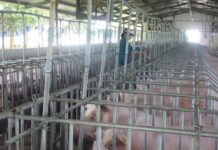Article 4 of the Vietnamese Law on Children, issued in 2016, emphasizes that “Protecting children means taking appropriate measures to ensure that children live safely and healthily.” However, in recent times, there have been unfortunate incidents and concerns raised about the safety of children in apartment buildings, with some even lacking recreational spaces due to encroachment.
Commenting on this issue, Dr. Nguyen Van Dinh, Vice President of the Vietnam Real Estate Association, pointed out two main problems. Firstly, there is a lack of detailed regulations and guidelines that specifically address children as a vulnerable group requiring special attention. Secondly, there has been a lack of consideration for children’s safety in the inspection and approval processes, from design plans to completed constructions.
Additionally, Dr. Dinh highlighted the importance of developers’ and investors’ awareness during the apartment construction process. He criticized some investors for prioritizing profits over the well-being of the community, including children, and for cutting corners by encroaching on areas meant for communal amenities and diverting them for personal gain.
“Right from the initial planning stages, developers and investors must be equipped with knowledge about child-friendly designs. Only then can we ensure the safety and happiness of children living in apartment buildings,” asserted Dr. Dinh.

Dr. Nguyen Van Dinh, Vice President of the Vietnam Real Estate Association, and Chairman of the Vietnam Real Estate Brokers Association.
He cited examples from Thailand and Malaysia, where social housing projects with 8,000 apartments still managed to provide well-planned infrastructure and amenities, including recreational and sports facilities. These projects demonstrated a clear consideration for vulnerable groups, such as the disabled and children, from the very beginning.
“In contrast, we still have some way to go in Vietnam. Even in apartment designs, there is a lack of child-centric thinking. We need to identify criteria that ensure children’s safety in residential buildings, including accessible transportation systems, elevators, and fire safety measures,” Dr. Dinh emphasized.
He commended reputable developers who have delivered high-quality, law-abiding projects, such as Vinhomes and Ecopark in Hanoi, which offer diverse infrastructure and amenities catering to the needs of families with children, including schools and playgrounds.
“It is evident that when developers prioritize consciousness and consideration for this vulnerable group, their projects will meet stringent standards, and residents can confidently choose to live there,” Dr. Dinh concluded. He further suggested that awards for projects should also consider the developers’ awareness as a criterion to promote the creation of safe and high-quality constructions for children.








































